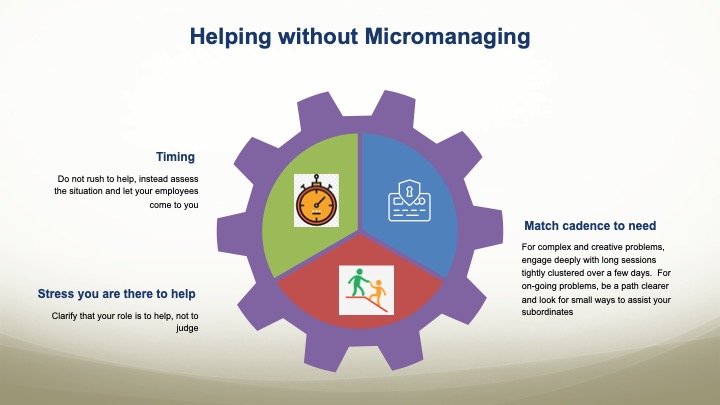While I hate making annual predictions, it does not keep me from asking others what they expect. I recently had the opportunity to speak with Jay Powell, arguably the most connected person in the game industry, on the key trends he saw in 2020 and what he expects this year. Jay was one of the first employees I ever hired (1998) and since then he has built relationships with thousands of game developers, publishers and tool providers.  Below is my conversation with
Below is my conversation with
Jay:
Lloyd: You are probably the most connected person in the industry so I wanted to start by asking you what major trends or changes you saw in 2020, what were people talking about and interested in?
Jay: That question can go one of two ways. There’s what we see at the AAA level with the Activision, Take Two, etc, then there’s the rest of the world.
Lloyd: Let’s start with the big money companies, then we’ll come back to the rest of the world.
Jay: At the AAA level we’re seeing companies (aside from Take Two) approach the streaming and subscription services with some seriousness. Stadia has stuck around, Apple has been paying guarantees for Arcade, and Microsoft has gone a fantastic job with Game Pass. These platforms are the new consoles in many ways and they can be approached for funding and distribution just like a traditional publisher. Plus, when the exclusivity ends, with some of these deals, you can still pursue more funding and distribution.
Lloyd: Google, MS and Apple are all huge, will one of them win?
Jay: My bet is on Microsoft. The probability is still too high that Google just packs it in if they don’t get the traction they want. That’s been the primary concern with them from the beginning. Aside from the fact that they still don’t seem to understand who their customer is. Apple is under assault from multiple angles right now and Arcade is great for people with Apple devices but iOS isn’t the dominant platform in mobile.
Microsoft has built a real value with Game Pass and they’re finally out there acquiring world class studios to make it even better. Buying Bethesda was huge and I’m very interested to see who they pick up next.
Lloyd: Are the AAA devs/publishers also coming around to streaming/subscriptions?
Jay: Yes, with the exception of Take Two. Activision hasn’t fully embraced it yet, but they will. EA signed on with Microsoft (and Ubi Soft is rumored to be adding their Uplay as well) to make their subscription service part of Game Pass and the next tier of publishers (Paradox for example) already see the value in it as well.
Take Two said they don’t see streaming as a major player in 2021 but let’s face it, with GTA 5 Online, Red Dead Online and the general power of those two IPs, they don’t need it.
Lloyd: Before we leave the world of AAA, you mentioned this being the new world of consoles. What about the old world of consoles, it felt like there was more buzz with the PS5 and Series S/X than there has been for a while with a new console generation, is it a dead man’s bump or a true resurgence?
Jay: I don’t think it’s either. It’s business as usual. The pandemic has been fantastic for Nintendo and the Switch, the early adopters are still buying up XBox Series X and PS5 because that’s what they do, and Microsoft’s Series S (plus Game Pass) is a great option in the middle. We’ve got a shortage now because of the usual holiday release rush and the world went through a global pandemic, which caused supply to be even lower than usual.
Lloyd: So you don’t see the console market increasing, it’s real, it’s here but it is not entering a new growth era?
Jay: I don’t think we’re going to see Microsoft and Sony enter a new growth era with their consoles, but Nintendo’s certainly seeing one.
Animal Crossing New Horizons has sold over 26 million units this year, largely because people were home with the pandemic. All of those players now have a Switch, they’re going to be looking for new games.
Lloyd: Jumping back to the online subs/streaming, what does it mean for the non-AAA companies, how are they seeing it?
Jay: Streaming for the non-AAA companies is a mixed bag. It’s not going to be a money tree for the majority of companies for the same reason every music artist doesn’t bring in tens of millions on Spotify. The big names are always going to make more money on stream/sub services because that’s what people usually gravitate to.
That said, with Apple, Microsoft, and other companies paying guarantees to get exclusives there is a new option for a lot of developers.
Back to streaming for everyone else… Paradox has said that much of the success of Crusader Kings 3 comes from the fact that they added it to Game Pass. We’re seeing these streaming options become marketing pieces for games and many times developers and publishers are paid up front to include them.
We’re also seeing the first wave of Apple Arcade’s exclusivity agreements expire. Now we have teams who’s game (plus live content) have been fully funded but now they are free to pursue other revenue streams for those games as well.
The entire ecosystem opens up opportunities for teams that are positioned (and interested) in taking them.
Lloyd: What about Steam? That’s become the major distribution channel for non-AAA, how is this competition impacting them and thus their ability to get Indie games out?
Jay: Steam’s problem isn’t getting indie games out, it’s getting visibility for the games. More than 200 games launch every week on Steam, they aren’t having any issues releasing games.
The competition from Microsoft and Epic in particular is forcing their hand and making them change their terms for the first time in over a decade though.
Lloyd: For the better? At least better for devs?
Jay: Somewhat. Steam’s changed their terms back in 2018 but it was to the benefit of the AAA crowd, not indies.
Apple changed their’s recently to create better terms for the indies versus the AAA. It’s two reactions to two different problems. In 2018 Steam was getting pressure from Epic but their move was to try to regain the AAA releases that had left their platform. Ubi Soft have UPlay, EA had their Origin launcher, Bethesda announced they would be skipping Steam for Fallout 76, Take Two built their own launcher. Steam was losing the blockbuster games that make the bulk of their revenue.
Apple’s change came from Epic’s pressure on their revenue share and Epic’s framed their entire legal campaign as a fight for the “little guys”
Lloyd: I was always a little amused about Epic fighting for the little guy.
Jay: Epic had a hand in forcing both changes though and I don’t think they get the credit they deserve for what they’ve done.
Lloyd: I agree but not don’t think they are purely altruistic, IMHO
Outside of what we just discussed, what else were people talking about in 2020. What were the big changes (outside Covid) that grabbed their attention or worried them?
Jay:
”I was always a little amused about Epic fighting for the little guy”
– Yea, me too. But with the revenue Fortnite brings in they are the only one’s who have had the nerve (and bankroll) to do it.
and no, it’s not completely altruistic but the indie teams will take all the support they can get.
I’m not sure you can frame 2020 without Covid. It’s been a huge driving force in so many areas of our industry. Before we dive into that we need to recognize that we (as the video game industry) have been VERY fortunate this year. Covid has ransacked so many industries, companies, and families but our world has profited greatly from it. Though we may speak about the pandemic and the “good” it brought to games, it’s not a good thing and a lot of people have suffered and died. I just wanted to make that clear.
Lloyd: So true.
Jay: The big change this year was everything moving online. For the non-AAA world it has allowed developers who have never had the chance to pitch their game to publishers at GDC get the chance due to digital events. (and yes, full disclosure, I run the longest running digital conference series in the industry).
Lloyd: Has that worked?
Jay: YES.
Have people gotten deals from online conferences?
Jay: The change has forced new ways of communicating for business and marketing, as well as internal studio communication. We’ve seen new tools pop up and new opportunities as a result.
We just got the survey stats in from our most recent event and our attendees alone are forecasting millions of dollars in revenue from deals as a result of one event.
And that wasn’t even our biggest event this year. Opening communication channels with no geographic barrier of entry opens up options to developers, publishers, and tech companies across the board.
The problem is, we were flooded with these events this year and we have had a lot of “Zoom Fatigue”. Like any market, that’s going to correct itself in 2021. The traditional conference companies are learning you can’t force the same model (and revenue) from an onsite event to an online event. The smaller companies are realizing it’s harder than it looks to run these events successfully.
The advantage we’ve had with our IndieGameBusiness I events is that we got to figure out all those problems back in 2019 when we were the only one’s doing these events.
Lloyd:
The change has forced new ways of communicating for business and marketing, as well as internal studio communication. We’ve seen new tools pop up and new opportunities as a result.
What are some of the new tools that have gained traction, that devs are really using (as opposed to VC backed and just getting hype)?
Jay: Zoom got the lion’s share of the spotlight because that’s what people were using pre-Covid. Now we’re seeing more video chat options opening up and the ones that existed previously such as Hangouts, Microsoft Teams, WebEx, and GoToMeeting have been forced to improve.
Slack has grown but not nearly like Discord has and both have pushed the other to innovate. Our native app at our conferences is 8×8 which isn’t nearly as popular but works amazingly well across all sorts of systems.
Now you’re seeing a growth in virtual conference software with Hopin.to, EventCombo, and others. They’re going to push companies like EventBrite to evolve.
We’re seeing new solutions pop up in VR conferences (which I’m still not sold on).
In the game industry specifically Xsolla has launched “Unconventional” which had a good test run earlier this year. Our partner MeetToMatch will be unveiling their integrated solution at our March event and we have developers coming together to create things like IWOCon.
This is IWOCon, very cool and ambitious if they pull it off – IWOCon
Lloyd: Enough of 2020 (I’m sure others would agree), what are you expecting in 2021?
Jay: I think we’ll see the fruits of a lot of the innovation that was forced on 2020 emerge next year.
In the game industry, in particular, we’re going to see online events mature as people learn how to manage them. We’ll see some (not all) of our favorite in-person events return in a hybrid form as well.
We’re going to see more attention paid to the subscription services as each platform starts acquiring high quality exclusive content.
We’re going to see a growth in markets like South America, the Middle East, and Africa because the companies there have a much easier path to the core industry. We’re going to see more of the western markets get involved with these territories for the same reason.
Lloyd: What do you mean by hybrid?
Jay: Hybrid events will be merging the on-site conferences with online versions. We’ve done this with our event that happens alongside GDC and other conferences have tested it as well. At the most basic level you allow your attendees that are physically at an event to schedule online meetings with registered attendees who aren’t. I imagine we’ll see virtual lectures and sessions as well.
Lloyd: In the emerging territories you mention, will the growth be subscription based or more traditional game sales?
Jay: Both, each market has it’s own nuances, advantages, and limitations. The most successful companies will be the ones who know what products and games fit the right audiences.
Lloyd: What else do you expect?
Jay: We’re going to have to see a better way for developers and small to mid tier publishers to boost their discoverability (which is still the biggest hurdle for the indie market).
We’re also going to see a lot of growth in online education both through traditional colleges and universities as well as specialized segments for markets like games.
Lloyd: Hasn’t discoverability been an issue for devs since when we first met in the 1990s at Octagon Entertainment and Merscom?
Jay: If we go all the way back to our Octagon days, we dealt with 75-150 publishers globally. Now my team tracks over 700 publishers across PC, console, and mobile.
When we were running Merscom the discoverability issue came from the casual space where companies like Big Fish were launching a new game every day (and taking 70% of the revenue). Now we see far more games launched on multiple platforms. The days of “A good game will always sell” are dead and gone.
Lloyd: How do 700 publishers make money, I can’t believe 700 devs could make money, and publishers need a suite of titles?
Jay: Well we track over 4,000 developers and I’m sure there are at least 1,000 more that haven’t hit our radar yet.
The reality is that 700 publishers don’t make money, We release our publisher list every year (new one arriving in early January) and it’s a major undertaking to keep our internal database accurate. Publishers come and go quickly but you don’t need as many hits to stay in business now if you run a streamlined company.
Lloyd: I’ve already kept you longer than I was supposed to, so thanks for the great conversation. Any parting thoughts you wanted to share?
Jay: I can do this all day.
2021 is going to see a continuation of the changes we saw in 2020. The companies that survive and prosper are going to be the ones paying attention to the market around them and can adapt as needed.
Now more than ever you need to know your audience, know how to reach them, understand their pain points, and deliver them an innovative solution. That’s going to be true for everything from the games we play, to where we play them, and the tech that runs them.
Thank you Lloyd, this was fun



















 Below is my conversation with
Below is my conversation with




